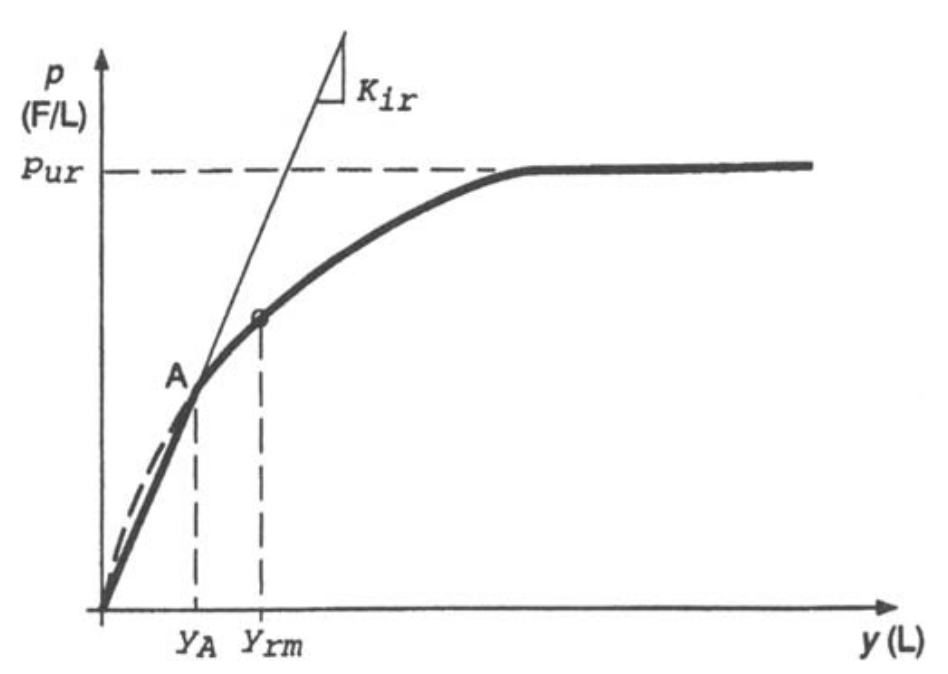4.14.5.35.1.11. WeakRock¶
- hystereticBackbone('WeakRock', backboneTag, Kir, pur, yrm)
The backbone function is defined on page 56 of this manual
backboneTag(int)integer tag identifying the backbone function.
Kir(float)see below
pur(float)see below
yrm(float)see below

For “weak rock” defined as rock with unconfined compressive strength between 0.5 MPa and 5 MPa, the shape of the p-y curve, as shown in above Figure, can be described by the following equations. For the initial linear portion of the curve
For the transitional and nonlinear portion
and when the ultimate resistance is reached
4.14.5.35.1.11.1. Kir¶
\(K_{ir}\) is the initial slope of the curve, which is related to the initial elastic modulus of the rock mass as follows
where \(E_{ir}\) = rock mass initial elastic modulus and \(k_{ir}\) = dimensionless constant given by
where \(B\) is shaft diameter, \(x_r\) is the depth below rock surface.
4.14.5.35.1.11.2. pur¶
\(p_{ur}\) is the rock mass ultimate resistance defined as
in which \(q_u\) = uniaxial compressive strength of intact rock, \(\alpha_r\) = strength reduction factor, and \(x_r\) = depth below rock surface. Selection of \(\alpha_r\) is based on the assumption that fracturing will occur at the surface of the rock under small deflections, thus reducing the rock mass compressive strength. The value of \(\alpha_r\) is assumed to be one-third for RQD of 100 and to increase linearly to unity at RQD of zero. The underlying assumption is that, if the rock mass is already highly fractured, then no additional fracturing with accompanying strength loss will occur. However, this approach appears to have a fundamental shortcoming in that it relies on the compressive strength of the intact rock and not the strength of the rock mass. For a highly fractured rock mass (low RQD) with a high-intact rock strength, it seems that the rock mass strength could be overestimated.
4.14.5.35.1.11.3. yrm¶
where
\(k_{rm}\) is a constant ranging from 0.0005 to 0.00005 that serves to establish the overall stiffness of the curve.
\(B\) is the shaft diameter.